Renewable Resources & Non-Renewable Resources Teaching Resources
Teach your students all about renewable and nonrenewable resources and natural resources this school year with printable worksheets, activities, vocabulary guides and more created by teachers for your primary lessons.
Aligned with the Australian V9 curriculum, this collection of teaching resources has been created with differentiated options and editable versions to make your lesson plans easier to create and save you time! Each resource in this collection has been thoroughly reviewed by a member of the Teach Starter teacher team to ensure it's classroom-ready.
New to teaching this section of the curriculum or looking for fresh ideas to explain the difference between renewable and nonrenewable resources and why these are so important? Read on for a primer from our teacher team!
What Are Natural Resources? A Kid-Friendly Definition
To explain renewable and nonrenewable and the differences between them, students have to first understand what it means to have a natural resource.
Natural resources are materials or substances that are naturally occurring in the environment and are valuable to humans for their economic, environmental, or cultural benefits. These resources are generally classified into two categories — renewable and nonrenewable resources.
What Is a Renewable Resource? A Kid-Friendly Definition
Need a kid-friendly way to explain this concept? Try this one: A renewable resource is a natural resource that we can use over and over again without running out.
It's sort of like having a cookie jar that never runs out of cookies. Only in this case, the 'cookies' provide the energy we need for things like heating our homes and running the electrical items in our schools.
Sometimes renewable resources will be regenerated naturally, while others require human intervention (for example, tree planting replenishes the wood supply but requires people to do some work!).
What Are Some Examples of Renewable Resources?
Some examples of renewable resources include:
- Sun — The sun is one of the most abundant renewable resources in Australia, and it is used to create energy with the help of solar panels.
- Wind — Wind turbines harness this renewable resource, generating electricity as gusts of wind move through them.
- Water — Hydroelectric dams are often used to create energy with this renewable resource.
What Is a Non-Renewable Resource?
As the prefix 'non' would indicate, nonrenewable resources are essentially the opposite of the renewable type. These natural resources used to create energy cannot be easily replenished or replaced.
Some may be used up entirely over time, and once they're gone, they will be gone for good. Others may come back, but the time it takes to come back is so long that it won't happen for thousands or even millions of years, which means we will run out too quickly.
Many nonrenewable resources create other issues, such as the harm that burning fossil fuels represents to the environment. Nonrenewable resources are often considered unsustainable, and their use is a major contributor to environmental degradation, climate change and other global issues.
What Are Some Examples of Nonrenewable Resources?
Some examples of nonrenewable resources that you can share with your students include:
- Fossil fuels — Nonrenewable fossil fuels like coal, oil and natural gas are used for electricity and heat but would take millions of years to regenerate.
- Minerals — Gold, silver and copper are all minerals that are mined for use in electronics, jewellery and more, but they won't just replenish naturally.
Renewable Energy vs. Non-Renewable Energy — What's the Difference?
Many of the resources we have are tied to the energy we use to power our houses, our cars and more. We classify these energy types as either renewable energy or non-renewable energy.
So what's the difference? Let's look at a breakdown you can share with students.
Renewable Energy
The energy that comes from natural resources that can be replenished over a relatively short period of time is called renewable energy.
Types of renewable energy include:
- Solar
- Wind
- Geothermal
- Biomass
Non-Renewable Energy
Non-renewable energy is produced with finite resources that cannot be easily replenished.
Sources of non-renewable energy include:
- Coal
- Oil
- Natural gas
- Plus Plan
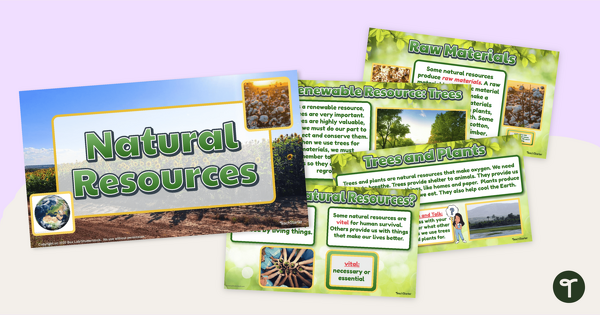
What Are Natural Resources? PowerPoint
A teaching presentation that explores what natural resources are and where they come from.
- Free Plan
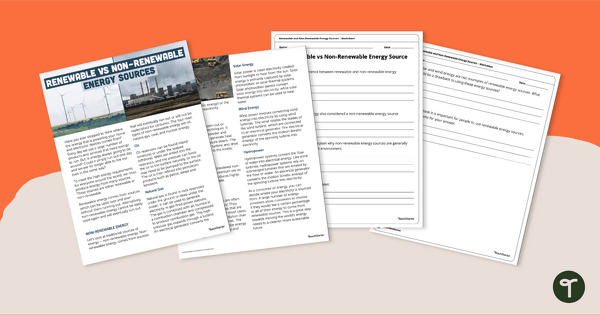
Renewable vs Non-Renewable Energy Sources – Worksheet
Discover the difference between renewable and non-renewable energy sources with a comprehension passage and worksheet.
- Free Plan
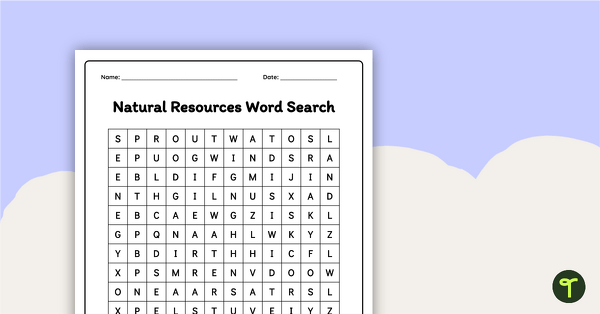
Natural Resources Word Search
Review the different natural resources with a word search.
- Plus Plan
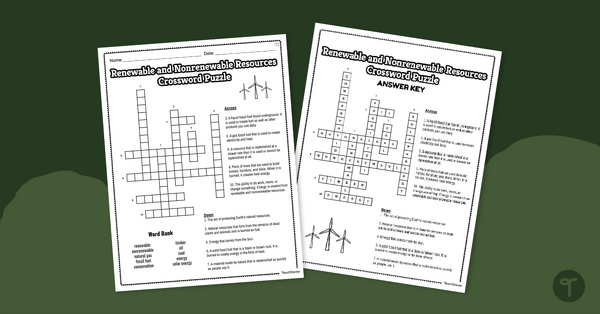
Renewable and Nonrenewable Resources – Crossword Puzzle
Reinforce science vocabulary with a renewable and nonrenewable resources crossword puzzle.
- Plus Plan
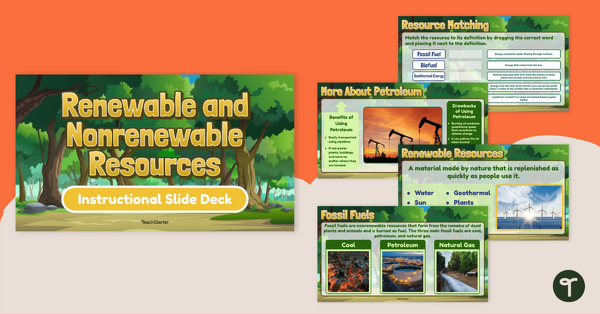
Renewable & Non-renewable Resources – Instructional Slide Deck
Investigate the differences between renewable and non-renewable resources as well as the benefits and disadvantages of each, with this instructional slide deck.
- Plus Plan
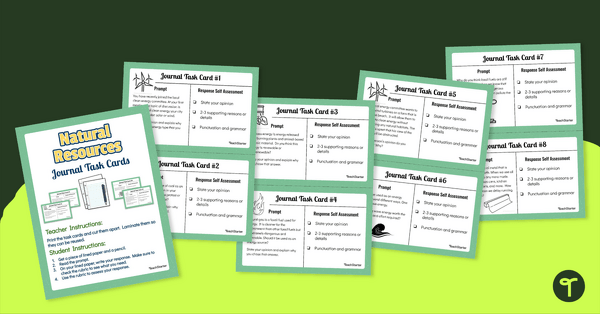
Natural Resources Task Cards - Journal Writing Prompts
Integrate science and writing while responding to specific scenarios regarding natural resources with this set of 24 journal task cards.
- Free Plan
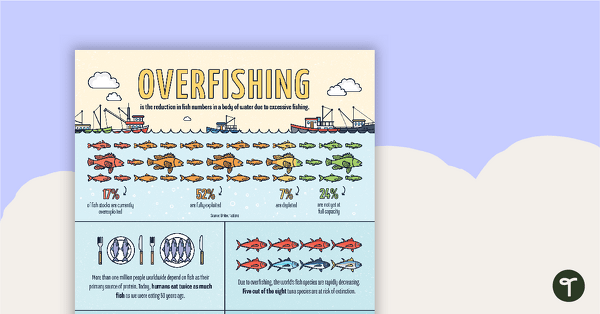
Overfishing – Infographic Poster and Worksheet
Explore overfishing and its effects on marine environments with this eye-opening infographic poster and accompanying comprehension worksheet.
- Plus Plan
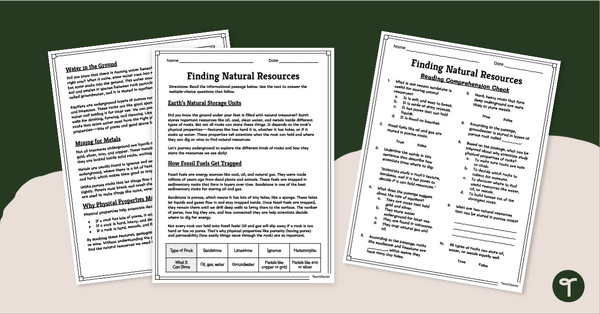
Earth’s Resources Worksheet - Natural Resources & Fossil Fuels (3-4)
Explore what's buried in rocks underground with a printable Earth’s Resources Worksheet for Year 4.
- Plus Plan
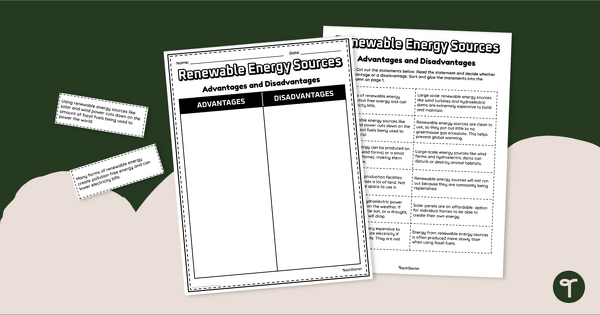
Advantages and Disadvantages of Renewable Energy Worksheet
Discover the advantages and disadvantages of renewable energy sources with a cut-and-paste sorting worksheet.
- Plus Plan
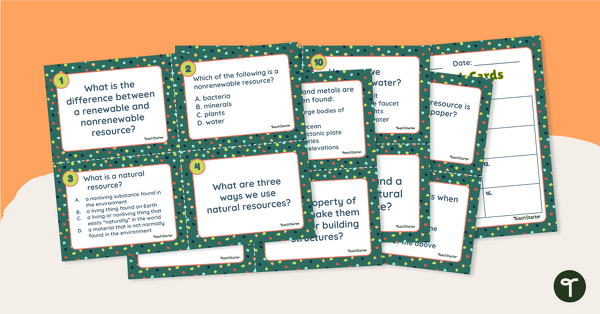
Natural Resources Task Cards
Answer questions about natural resources and their uses with this set of 16 task cards.
- Plus Plan
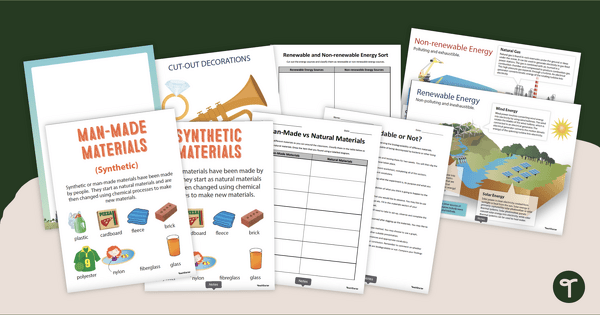
Material World Resource Pack
Learn about natural and manmade materials with a printable resource pack.
- Plus Plan
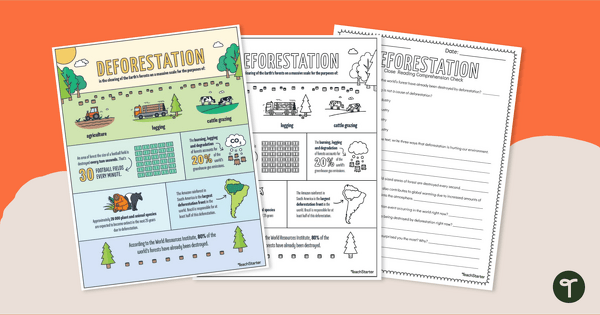
Deforestation – Infographic Poster and Worksheet
Read and learn about deforestation with an engaging infographic and comprehension worksheet.
- Plus Plan
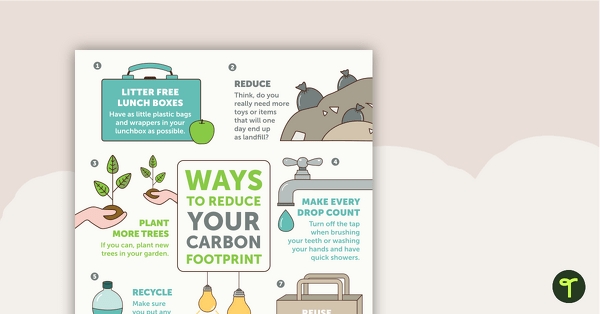
Ways to Reduce Your Carbon Footprint – Poster and Worksheet
Explore how to reduce your carbon footprint with this poster and accompanying comprehension worksheet.
- Plus Plan
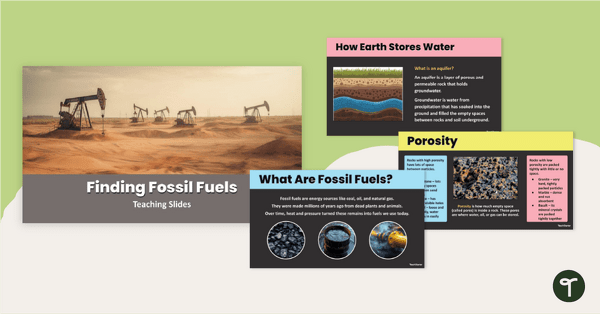
Finding Fossil Fuels PowerPoint
Use an interactive ‘Finding Fossil Fuels’ Natural Resources PowerPoint to teach your students about how and where the Earth stores natural resources such as fossil fuels.
- Plus Plan
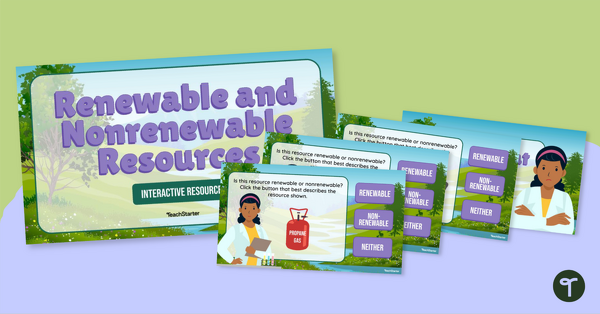
Renewable or Nonrenewable? - Self-Checking Interactive
Investigate the differences between renewable and nonrenewable resources with a self-checking interactive science game.
- Plus Plan
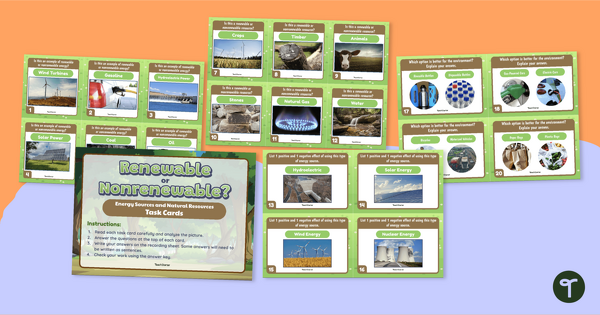
Renewable or Nonrenewable? Earth's Resources Task Cards
Identify natural resources and the types of renewable energy with 24 renewable and nonrenewable resource task cards.
- Plus Plan
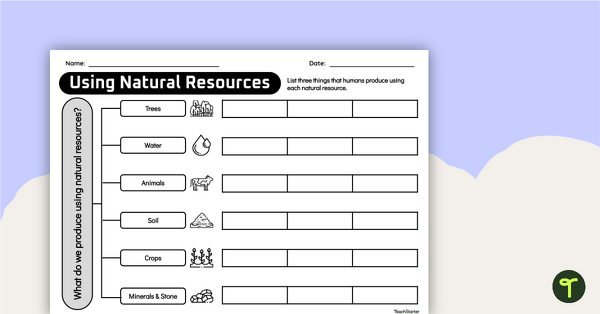
How Do We Use Natural Resources? Concept Map Worksheet
Help your students uncover the ways that humans use natural resources with a concept map.
- Plus Plan
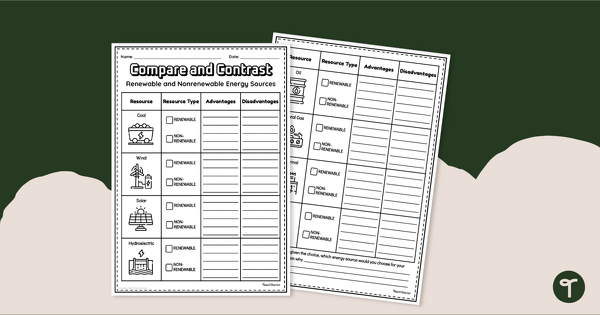
Comparing Energy Sources Worksheet & Graphic Organiser
Compare and contrast different types of renewable energy sources with a printable graphic organiser.
- Plus Plan
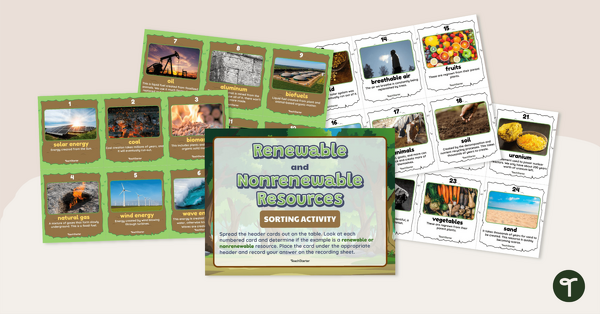
Renewable and Nonrenewable Resources – Sorting Activity
Identify resources as either renewable or nonrenewable with this 24-card sorting activity
- Plus Plan
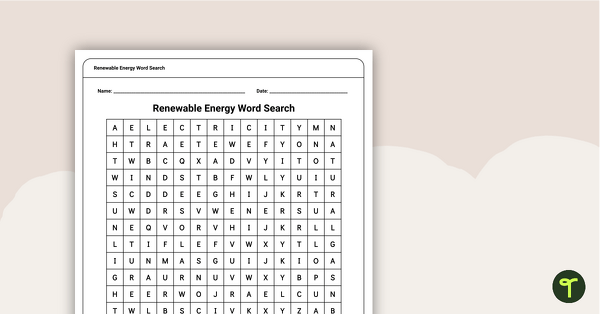
Renewable Energy Word Search
Review science vocabulary terms with an engaging renewable energy word search.
- Plus Plan
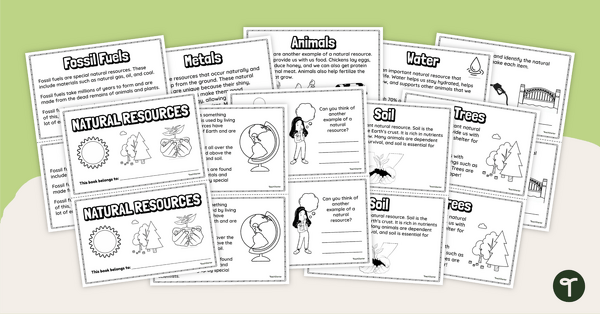
Natural Resources Mini Booklet - Sustainability Activity
Create your own books about natural resources with a printable natural resources book for kids.
- Plus Plan
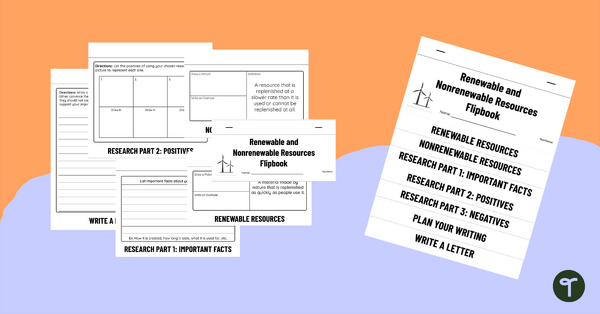
Renewable and Nonrenewable Resources Flipbook
Use this printable science flipbook with your students to research and write about a chosen natural resource.
- Plus Plan
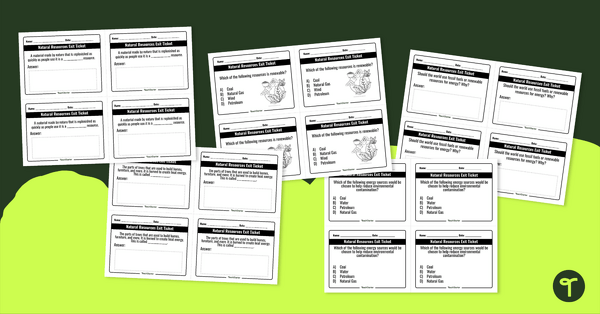
Natural Resources – Exit Tickets
Assess student understanding of natural resources with this set of exit tickets.
- Plus Plan
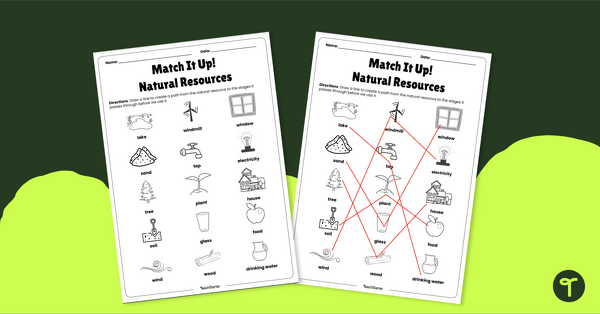
Match It Up! Natural Resources – Worksheet
Match natural resources with how they are used with the help of this worksheet.
- Plus Plan
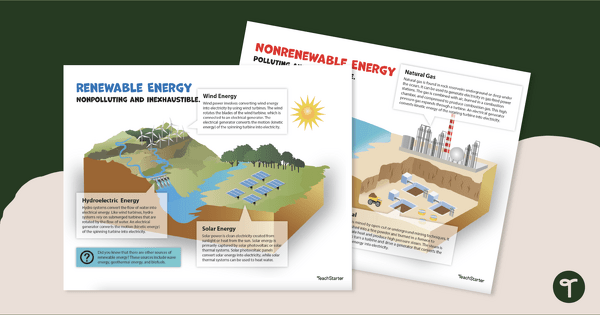
Renewable and Non-renewable Energy Sources Poster Pack
Display and examine renewable and non-renewable energy sources, including wind, hydro, solar, natural gas, oil and coal.
- Plus Plan
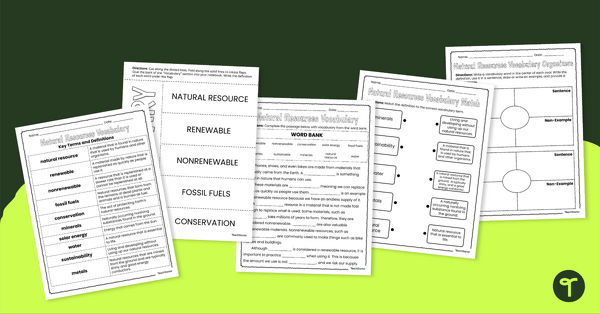
Natural Resources Vocabulary Worksheets
Practise and review vocabulary terms associated with natural resources with this worksheet pack.
- Plus Plan
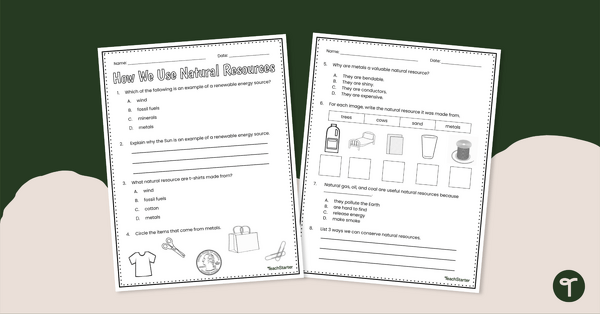
How We Use Natural Resources Worksheet
Explore the characteristics of natural resources and what makes them useful in products and materials with this worksheet.
- Plus Plan
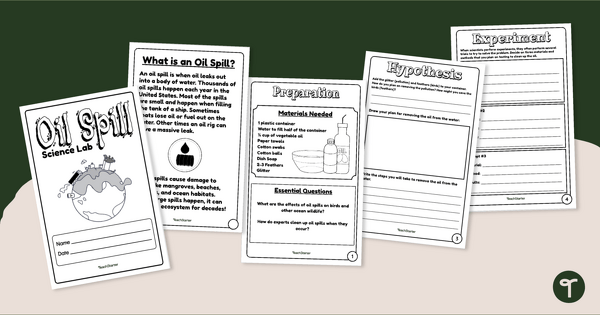
Oil Spill Science Experiment for Water Pollution
Investigate a man-made natural disaster and discover the effects of oil spills on wildlife with an oil spill science experiment.
- Plus Plan
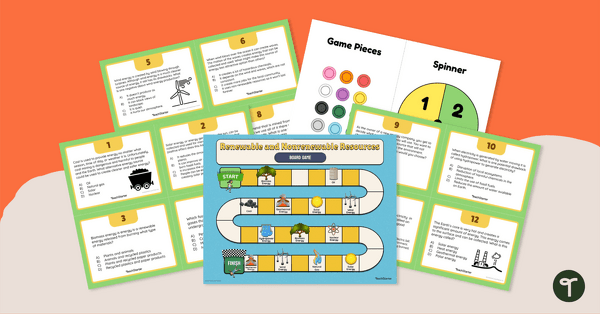
Renewable and Nonrenewable Resources – Board Game
Answer questions related to renewable and nonrenewable resources with this printable board game.
- Plus Plan
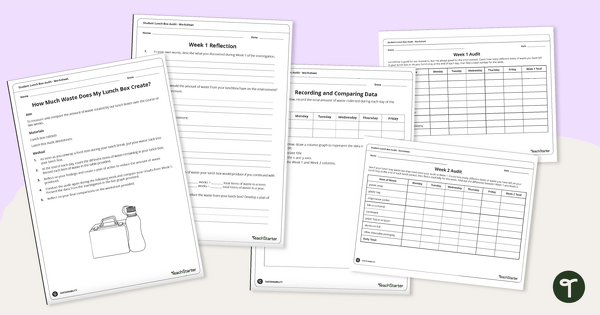
Student Lunch Box Audit - Reducing Waste Project
An investigation that will have students calculating the waste produced from their lunch boxes, creating a plan of action to reduce their waste and reflecting on their results.
- Plus Plan

Renewable and Non-renewable Resources – Cut and Paste Worksheet
Sort renewable and non-renewable resources with this cut-and-paste worksheet.
- Plus Plan
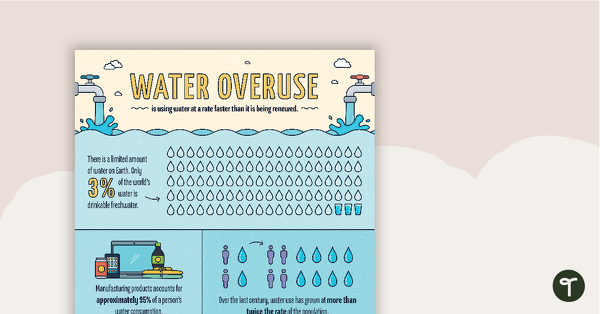
Water Overuse – Infographic Poster and Worksheet
Explore the overuse of water and its effects on the world’s population with this eye-opening infographic poster and accompanying comprehension worksheet.